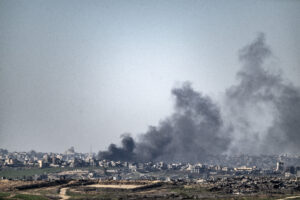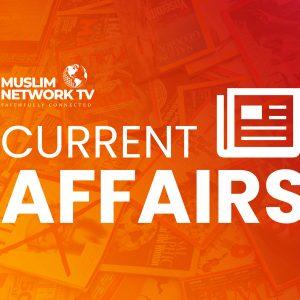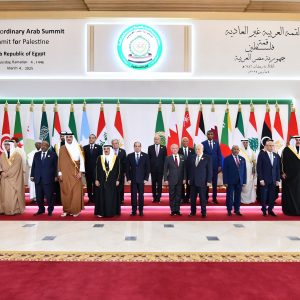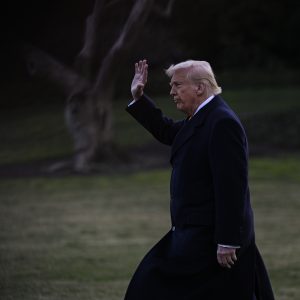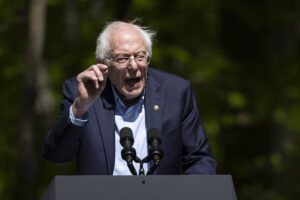Tragedy in mountains: Iranian President Raisi dies in helicopter crash, political aftermath
By Iftikhar Gilani
In the early hours of Monday, a Turkish Bayraktar Akinci unmanned aerial vehicle (UAV) detected a heat source in the mountainous northwest of Iran. The coordinates shared with Iranian authorities confirmed the wreckage of a helicopter carrying Iranian President Ebrahim Raisi and several key officials.
The helicopter, also carrying Iran’s Foreign Minister Hossein Amirabdollahian, had gone missing on Sunday over East Azerbaijan province, prompting a massive rescue operation in the fog-shrouded forest. An Iranian official stated that hopes dwindled throughout the night until they received the Turkish coordinates.
President Raisi was traveling near Jolfa, a city on the border with Azerbaijan, approximately 600 kilometers northwest of Tehran. Initial conflicting reports placed the crash site near the village of Uzi.
Turkish authorities released drone footage showing a fire, suspected to be the wreckage, 20 kilometers south of the Azerbaijan-Iran border on a steep mountain. Tragically, all nine people on board, including Raisi and Foreign Minister Amirabdollahian, were confirmed dead.
Vice President Mohammad Mokhber assumed presidential powers until new elections are held within 50 days, as stipulated by the Iranian constitution. Analysts say this sudden transition leaves Iran in a state of political uncertainty, particularly regarding its domestic and foreign policies.
Ebrahim Raisi, a hardline cleric known for his conservative views, served as Iran’s eighth president from 2021. His rise to power was facilitated by the Guardian Council disqualifying numerous reformist and moderate candidates in the 2021 election, clearing the path for his victory.
Raisi faced substantial criticism for his role in the controversial 1988 judicial commission and his handling of the 2022 protests following the death of Mahsa Amini. Amini’s death while in morality police custody on September 16, 2022, sparked widespread social and political unrest in Iran. The demonstrations were among the largest and longest in the Islamic Republic’s history, resulting in severe state repression, with over 500 protesters killed and hundreds more injured, disappeared, or detained.
-Raisi’s diplomatic maneuvering
Despite widespread expectations that Raisi’s tenure would be marked by seclusion and controversy, he managed to navigate the complex world of international relations adeptly. Under his leadership, Iran continued to enrich uranium, escalating tensions with the West. However, Raisi achieved significant diplomatic success by restoring ties with Saudi Arabia in 2023 following Chinese-mediated negotiations, outwitting American diplomacy.
This reconciliation enabled progress in peace talks in Yemen, where Saudi Arabia supports the government against Houthi rebels backed by Tehran, preventing a regression into military escalation.
Analysts view these diplomatic achievements as a testament to Raisi’s strategic pragmatism. The reconciliation with Saudi Arabia opened avenues for dialogue with other regional powers and contributed to a temporary reduction in regional tensions.
In November, during Israel’s war on Gaza, both Syrian President Bashar Al-Assad and Raisi attended an emergency Arab League summit in Riyadh, advocating for more punitive measures against Israel. Beyond political gains, the reconciliation between two of the region’s major economies led to discussions about boosting trade ties.
Under Raisi’s leadership, Iran dusted off the Chabahar port deal with India defying potential U.S. sanctions. Both countries recently signed a 10-year agreement to develop and operate Iran’s strategic port, providing India connectivity to Afghanistan and Central Asian countries, bypassing Pakistan. India will operate a terminal in Shahid Beheshti and invest $120 million into equipping it, with an additional $250 million loan credit facility for related projects in the port, bringing the contract’s value to $370 million.
In April Raisi visited Pakistan to discuss regional and bilateral relations. The border tensions had escalated in January between the two countries, when Iran carried out air attacks across the border in Pakistan killing two children. The Iranian state media said the attack was targeting two bases of the armed group Jaish al-Adl. Pakistan retaliated by firing a missile into Iranian territory and recalling its ambassador from Tehran. The relations were back on rails soon with the visit of Raisi.
The exchange of prisoners between Iran and the United States, announced in August 2023 and implemented in September is also seen as pragmatic diplomatic move of Raisi.
This came along with the release of six billion dollars previously frozen in South Korea due to U.S. sanctions.
In the wake of the “Al Aqsa Flood” operation, when Hamas dismantled borders created by Israel, many states held Iran responsible for providing finances and military wherewithal.
But just a few days after the October 7 attack, U.S. Secretary of State Antony Blinken remarked that no concrete evidence linked Iran directly to the attack, and the Israel Defense Forces (IDF) could not conclusively tie Iran to the planning or execution of the attacks, Iran’s sustained backing of groups like Palestine resistance has amplified its influence in the Middle East and streets in the Arab world. It has also forced many other Arab countries like Egypt to come forward to publicly come to the aid of Palestinians.
-Succession race opens
Raisi’s death also marks a significant moment in Iranian politics, potentially reshaping the country’s leadership dynamics. He was seen as a potential heir to Iran’s supreme leader, Ayatollah Ali Khamenei.
The sudden vacancy has now opened the field for other competitors. This sensitive issue has mostly remained confined to power corridors, with Khamenei’s loyalists believed to be orchestrating a succession plan to ensure the next leader is his chosen successor.
This week, former President Hassan Rouhani, a moderate sidelined from decision-making, brought the issue into the spotlight. In a public letter, Rouhani protested his disqualification from the Assembly of Experts, the clerical body responsible for appointing the next supreme leader.
Rouhani, who served two terms as president from 2013 to 2021 and was a member of the Assembly of Experts for two decades, found his recent disqualification particularly significant.
With the Assembly of Experts holding an eight-year mandate and the 85-year-old Khamenei reportedly facing health issues, the composition of the assembly is crucial, as it may appoint the next supreme leader.
Analysts in Tehran suggest that in the absence of Raisi, the field has been left wide open for Khamenei’s son, 56-year-old cleric Mojtaba Khamenei, as his successor. Mojtaba, largely absent from the media, is believed to be his father’s right-hand man, wielding significant influence, and maintaining close ties with the powerful Islamic Revolutionary Guard Corps (IRGC).
According to Al-Monitor, a website covering the Middle East, the list of potential successors has been kept super confidential. Mohammad Ali Mousavi Jazayeri a senior member of the Assembly of Experts earlier in February defended keeping the list secret, citing concerns over potential assassination plots by Iran’s enemies, the US and Israel.
But insiders said besides Mojtaba, Rouhani and Hassan Khomeini, the grandson of Ayatollah Ruhollah Khomeini, were potential candidates to claim the topmost position in Iran.
The helicopter crash also claimed the life of Iran’s Foreign Minister Hossein Amir-Abdollahian, who was instrumental in presenting Tehran’s case to the international community and seeking ways to mitigate the harsh effects of sanctions.
Born in 1964, Amir-Abdollahian graduated from Tehran University with a degree in international relations in 1991. Fluent in Persian, Arabic, and English, he served as the ambassador to Bahrain during President Mahmoud Ahmadinejad’s administration.
Amir-Abdollahian later became the deputy foreign minister for Arab and African Affairs under both Ahmadinejad and Hassan Rouhani. Before his tenure as foreign minister, he was the Special Assistant for International Relations to Parliament Speaker Mohammad Bagher Ghalibaf.
As foreign minister, Amir-Abdollahian oversaw the restoration of diplomatic relations between Iran and Saudi Arabia in March 2023, ending seven years of tensions and leading to the reopening of embassies in both countries.
The untimely demise of President Ebrahim Raisi and his top officials has plunged Iran into a period of profound political uncertainty. As Vice President Mohammad Mokhber steps in as the interim leader, the nation faces a critical juncture. The upcoming elections, the succession race for the supreme leader, and the impact on Iran’s domestic and foreign policies will be closely watched by both regional and international observers.
Iran’s resilience in navigating these challenges will determine its future trajectory, shaping the geopolitical dynamics of the Middle East for years to come.
-Historical precedents
The tragic death of President Raisi and his key officials is not without historical precedent. Throughout history, numerous world leaders have perished in air crashes.
For instance, on December 9, 1936, Swedish Prime Minister Arvid Lindman died in a plane crash near Croydon Airport. Similarly, on July 4, 1943, Polish statesman Wladyslaw Sikorski died when his plane crashed in Gibraltar.
Other notable incidents include the deaths of Paraguayan President Marshal Jose Felix Estigarribia in 1940, Brazilian Interim President Nereu Ramos in 1958, and Central African Republic President Barthelemy Boganda in 1959.
More recent tragedies include the 1988 crash in Pakistan that claimed the life of President Ziaulhaq, 2010 plane crash that killed Polish President Lech Kaczynski and his wife in Russia.

